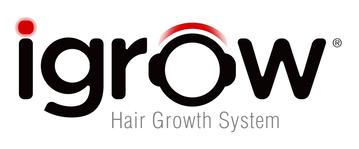Men's Clinical Study
Men's Clinical Study
Lasers Surgery and Medicine 2014 Apr; 46(4):373.
Title
The Growth of Human Scalp Hair Mediated By Visible Red Light Laser and Led Sources In Males. Lanzafame RJ, Blanche RR, Bodian AB, Chiacchierini RP, Fernandez-Obregon A, Kazmirek ER
Abstract
Background and Objectives: Low-level laser therapy (LLLT) has been used to promote hair growth. A double-blind randomized controlled trial was undertaken to define the safety and physiologic effects of LLLT on males with androgenic alopecia. Methods Forty-four males (18-48 yo, Fitzpatrick I-IV, Hamilton-Norwood IIa-V) were recruited. A transition zone scalp site was selected; hairs were trimmed to 3 mm height; the area was tattooed and photographed. The active group received a “TOPHAT655” unit containing 21, 5 mW lasers (655 +/- 5 nm), and 30 LEDs (655 +/- 20 nm), in a bicycle-helmet like an apparatus. The placebo group unit appeared identical, containing incandescent red lights. Patients treated at home every other day × 16 weeks (60 treatments, 67.3 J/cm(2) irradiance/25 minute treatment), with follow up and photography at 16 weeks. A masked 2.85 cm(2) photographic area was evaluated by another blinded investigator. The primary endpoint was the percent increase in hair counts from baseline.
Results
Forty-one patients completed the study (22 active, 19 placebo). No adverse events or side effects were reported. Baseline hair counts were 162.7 +/- 95.9 (N = 22) in placebo and 142.0 +/- 73.0 (N = 22) and active groups respectively (P = 0.426). Post Treatment hair counts were 162.4 ± 62.5 (N = 19) and 228.7 +/- 102.8 (N = 22), respectively (P = 0.0161). A 39% percent hair increase was demonstrated (28.4 +/- 46.2 placebo, N = 19; 67.2 +/- 33.4, active, N = 22) (P = 0.001) Deleting one placebo group subject with a very high baseline count and a very large decrease, resulted in baseline hair counts of 151.1 +/- 81.0 (N = 21) and 142.0 +/- 73.0 (N = 22), respectively (P = 0.680). Post treatment hair counts were 158.2 +/- 61.5 (N = 18) and 228.7 +/- 102.8 (N = 22) (P = 0.011), resulting in a 35% percent increase in hair growth (32.3 +/- 44.2, placebo, N = 18; 67.2 +/- 33.4, active, N = 22) (P = 0.003).
Conclusions
LLLT of the scalp at 655 nm significantly improved hair counts in males with androgenetic alopecia.
Click here to read the full report
Lasers Surgery and Medicine 2014 Apr; 46(4):373.
Title
The Growth of Human Scalp Hair Mediated By Visible Red Light Laser and Led Sources In Males. Lanzafame RJ, Blanche RR, Bodian AB, Chiacchierini RP, Fernandez-Obregon A, Kazmirek ER
Abstract
Background and Objectives: Low-level laser therapy (LLLT) has been used to promote hair growth. A double-blind randomized controlled trial was undertaken to define the safety and physiologic effects of LLLT on males with androgenic alopecia. Methods Forty-four males (18-48 yo, Fitzpatrick I-IV, Hamilton-Norwood IIa-V) were recruited. A transition zone scalp site was selected; hairs were trimmed to 3 mm height; the area was tattooed and photographed. The active group received a “TOPHAT655” unit containing 21, 5 mW lasers (655 +/- 5 nm), and 30 LEDs (655 +/- 20 nm), in a bicycle-helmet like an apparatus. The placebo group unit appeared identical, containing incandescent red lights. Patients treated at home every other day × 16 weeks (60 treatments, 67.3 J/cm(2) irradiance/25 minute treatment), with follow up and photography at 16 weeks. A masked 2.85 cm(2) photographic area was evaluated by another blinded investigator. The primary endpoint was the percent increase in hair counts from baseline.
Results
Forty-one patients completed the study (22 active, 19 placebo). No adverse events or side effects were reported. Baseline hair counts were 162.7 +/- 95.9 (N = 22) in placebo and 142.0 +/- 73.0 (N = 22) and active groups respectively (P = 0.426). Post Treatment hair counts were 162.4 ± 62.5 (N = 19) and 228.7 +/- 102.8 (N = 22), respectively (P = 0.0161). A 39% percent hair increase was demonstrated (28.4 +/- 46.2 placebo, N = 19; 67.2 +/- 33.4, active, N = 22) (P = 0.001) Deleting one placebo group subject with a very high baseline count and a very large decrease, resulted in baseline hair counts of 151.1 +/- 81.0 (N = 21) and 142.0 +/- 73.0 (N = 22), respectively (P = 0.680). Post treatment hair counts were 158.2 +/- 61.5 (N = 18) and 228.7 +/- 102.8 (N = 22) (P = 0.011), resulting in a 35% percent increase in hair growth (32.3 +/- 44.2, placebo, N = 18; 67.2 +/- 33.4, active, N = 22) (P = 0.003).
Conclusions
LLLT of the scalp at 655 nm significantly improved hair counts in males with androgenetic alopecia.
Click here to read the full report

